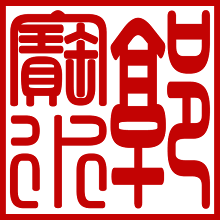(一)the
basic meaning of “在”is describe “presence”,
basic structure is:
Name (people or thing)
+ 在 + premises word
Arti dasar dari “在”adalah
“keberadaan”, struktur dasarnya adalah:
Nama (orang atau benda)
+ 在 + nama tempat
“在”的基本意义是表示“存在”,基本结构是:
名(人或事物) + 在 + 处所词语
例如:(1)他在学校
(2)书在桌子上
(3)银行在学校旁边
“在”kalau udah tau
lokasinya, kadang boleh tidak ditulis.
“在”的处所如果是已知的,有时可以省略。
例如:(1)我上午给你打了一次电话,你没在。
(2)张圆在吗?
--- 在,请进。
(二)if
the noun itself describe premises word, sometimes can use it directly to describe location. Commonly the subject is
indicate people (noun).
Kalau kata bendanya sudah menunjukan
lokasi, kadang bisa langsung digunakan utk menunjuk lokasi. Pada umumnya kata
benda orang menjadi subyek.
名词本身就是一个表示处所的词语,有时可以直接用来表示处所。主语一般是表人的名词。
例如:(1)玛丽今天在学校。
(2)图书馆在学校。(X)
(3)食堂在一楼。(一楼是具体场所)(一楼 is a specific location)
(三)if
the common nouns (people or thing) want to describe location, it must be add with
noun of locality or indicate location of pronoun --- 这儿, 那儿,etc.
Kalau kata benda umum (orang atau benda)
ingin menunjuk lokasi, harus ditambahkan kata benda lokasi atau kata ganti
berarti lokasi ---这儿, 那儿, dll.
普通名词(表示人或事物)要表示处所,必须加上方位词或者指代处所的代词
----- 这儿、那儿等。
例如:(1)词典在书包里。
(2)词典在书包。(X)
(3) 电视在书架旁边。
(4)电视在书架。(X)
(5)钱在小李那儿。
(6)钱在小李。(X)
Sometimes can independent use noun of
locality combination to describe location.
Kadang kombinasi dari kata benda lokasi
bisa berdiri sendiri utk menunjuk suatu lokasi.
合成方位词有时可以单独用来表示处所。
例如:(1)后门在北面。
(2)我们在后面。
四)if “在”
only describe “presence” and not describe action, can`t add “了”
“着” “过”at behind. If
describe past condition, can add timeline words in the front of verb.
Kalau “在” hanya berarti
“keberadaan” dan tidak berarti tindakan, tidak boleh menambahkan “了”
“着” “过” dibelakangnya.
Kalau menunjuk keadaan lampau, boleh ditambahkan kata waktu didepan kata kerja.
“在”只表示“存在”,不表示动作,后边不能加“了”
“着” “过”。如果表示过去的情况,可以在动词前面加上时间性词语。
例如:(1)昨天上午,我在图书馆。
(2)他刚才还在家呢。
(五)the negative model of
“在” is “不”, sometimes can use
“没”. If the position of the thing is fixed,
commonly is use “不” ; and if alterable, it must
look the condition to choose using “不” or “没”.
Bentuk negative dari “在”
adalah “不”, terkadang boleh menggunakan “没”.
Klo posisi bendanya tidak bergerak, umumnya menggunakan “不”;
dan bila bisa berpindah, utk memilih menggunakan “不”
atau “没” harus melihat keadaannya.
“在”的否定形式是“不”,有时可以用“没”。某物的位置是相对固定不变的,一般用“不”;可变的人或事物可根据情况选择“不”或“没”。
例如:(1)图书馆在这儿,在那座楼后边。
(2)我上午没在家。
(3)他现在不在中国。
(4)图书馆没在这儿,在那座楼后边。(X)
(5)那座山没在南边,在西边。(X)
Indicate future “presence”, only can use
“不” when it was negative.
Saat menunjuk “keberadaan” mendatang,
hanya bisa menggunakan “不” utk kata negative.
表示将来时间“存在”,只能用“不”否定。
例如:(1)下午,我不在家。
(2)下午,我没在家。(X)

No comments:
Post a Comment
Just feel free to comment or ask anything my friend.
help us to improve this blog for the benefit of anyone who want to learn Chinese.
i`ll always try the best to answer or reply your comment as soon as possible ^.^